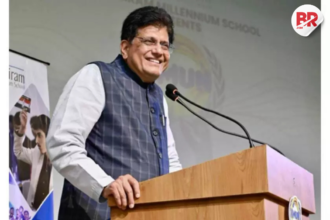
Bengaluru Metro Phase 3—the much-awaited expansion of the city’s metro network—is off to a slow start. Eight months after receiving approval from the Union government in August 2024, the project still hasn’t moved past the planning table. Not a single civil work tender has been issued for the two new corridors covering 44.6 km.
For a city grappling with daily traffic snarls and a population that’s sprinting toward 15 million, this delay feels less like a speed bump and more like a dead end.

What Does This Mean for the People of Bengaluru?
Imagine you’re stuck in Outer Ring Road traffic, again, watching the metro tracks above stretch into the horizon—but never actually go anywhere. That’s what this delay feels like for thousands who rely on public transport.
Bengaluru Metro Phase 3 was supposed to unlock faster, cleaner, and more efficient connectivity. But without civil work tenders, there’s no shovel in the ground, no job creation, and no relief in sight for commuters.
So, what’s causing the holdup?
Double-Decker Dreams, Budget Nightmares
The state government has introduced a bold idea: double-decker flyovers. These would stack a metro line over a road flyover, making better use of Bengaluru’s already congested vertical space.
It’s a creative solution—and a costly one.
The Bangalore Metro Rail Corporation Limited (BMRCL) now finds itself trapped between ambition and affordability. The revised designs are impressive on paper but come with a serious price hike. And that price tag is putting the brakes on progress.
Also Read Bengaluru’s New Air India SATS Logistics Park: The Future of Cargo, Now in Motion
Why Opt for Double-Decker Flyovers?
This isn’t just urban showboating. There’s solid logic behind the idea:
- Space Efficiency: Bengaluru has little room left to build horizontally. Going vertical helps avoid costly land acquisition.
- Less Traffic Disruption: Instead of separate construction for roads and rails, both get built in one go.
- Modern Urban Design: Integrated infrastructure could mean fewer long-term disruptions and a smarter commute.
In theory, it’s brilliant. In reality, it’s broke.
The Real Bottleneck: Funding
Here’s where things really jam up:
- Cost Escalation: Double-decker structures increase costs significantly.
- Loan Renegotiations: BMRCL must now return to international and national funding agencies and revise the numbers—again.
- State Budget Crunch: Karnataka’s state government is already juggling multiple infrastructure projects, leaving little wiggle room.
It’s like signing up for a five-star buffet and realizing your wallet only covers street food.
Also Read AI Meets E-Commerce: Is ChatGPT Building the First AI-Powered Shopping Mall?
What Needs to Happen Now
To get Bengaluru Metro Phase 3 moving, three steps are critical:
- Secure More Funds: Both state and central governments need to commit more money. BMRCL must also explore private partnerships or public-private models to bridge the gap.
- Lock in the Design: Finalize the double-decker flyover plan and get all required clearances.
- Issue Tenders Fast: Once funding and design are aligned, construction can finally begin.
Time is of the essence. Every delay increases the cost, not just financially but in public trust and urban well-being.
Will Bengaluru Metro Phase 3 Ever Take Off?
Yes—if action is taken swiftly. The vision is strong, and the demand is undeniable. But bold ideas need bold funding. Until that happens, the double-decker dream risks becoming another PowerPoint fantasy.
Still, hope isn’t off the rails just yet.
Also Read Delhi-Dehradun Expressway: A Small Land Dispute in Ghaziabad Delays 200-km Highway Project












